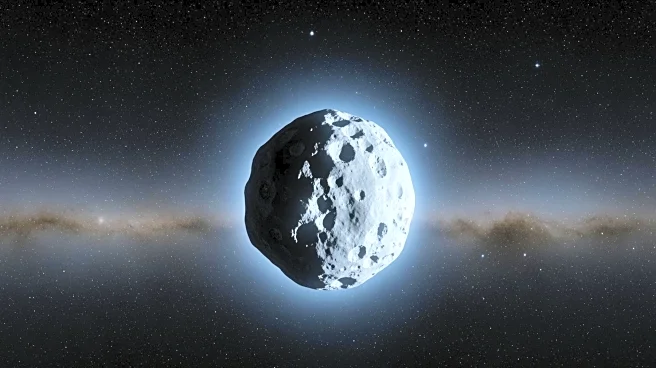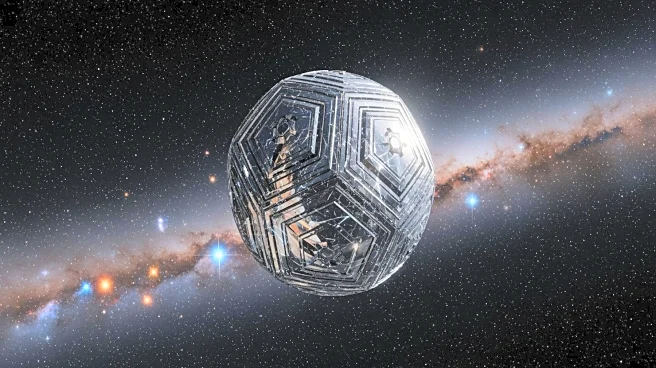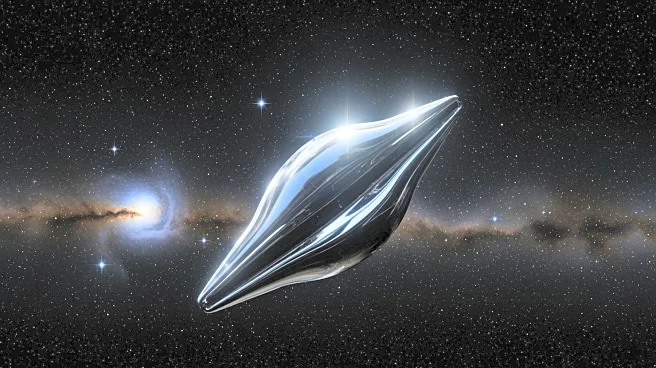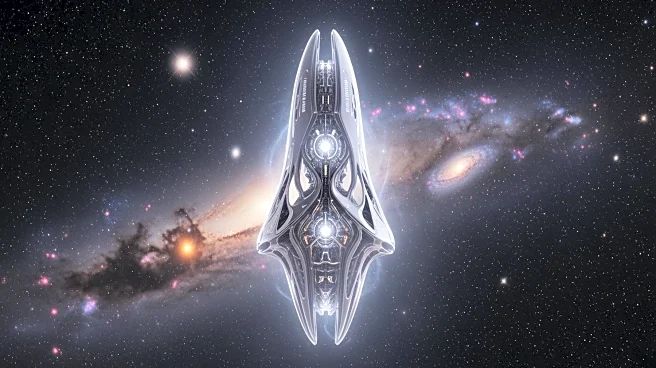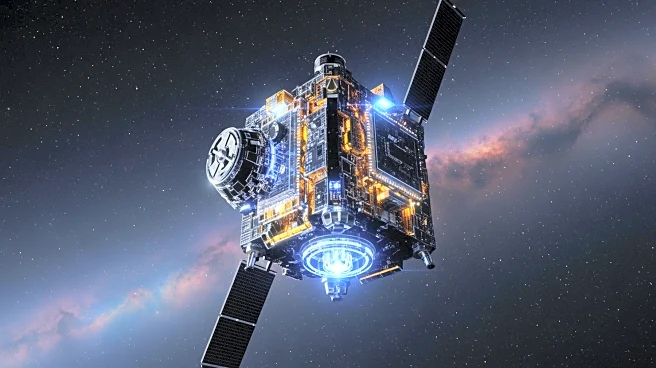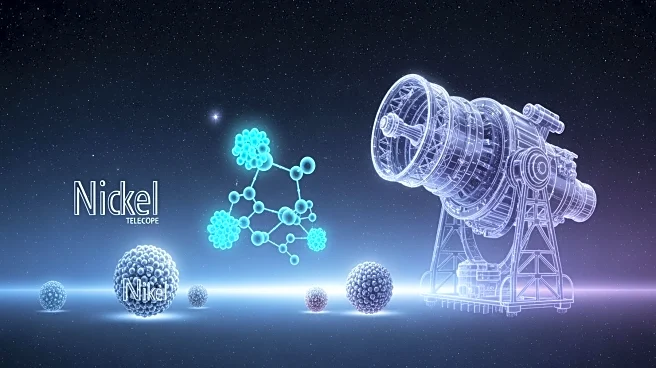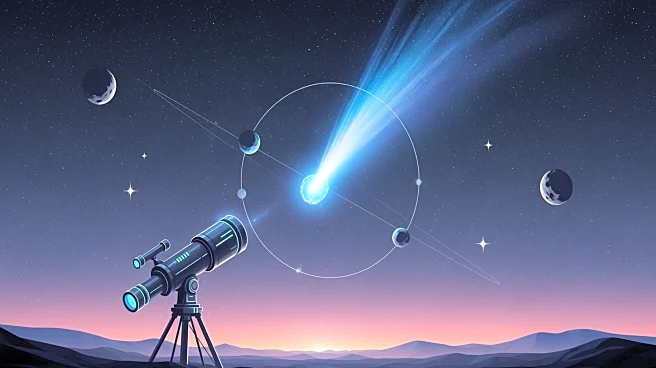What's Happening?
An interstellar object named 3I/ATLAS, comparable in size to Manhattan, is traversing the solar system and emitting a metal alloy never before observed in nature. According to Harvard astrophysicist Dr.
Avi Loeb, the object is releasing a plume containing four grams of nickel per second without any iron, resulting in the formation of nickel tetracarbonyl. This compound is typically found only in industrial manufacturing processes. The object was first captured by the Hubble Telescope in July, and subsequent observations by the Keck II telescope in Hawaii confirmed the unusual emissions. The phenomenon challenges existing understanding of cometary compositions, as previous interstellar comets have shown nickel and iron in similar proportions.
Why It's Important?
The discovery of nickel tetracarbonyl in an interstellar object raises significant questions about the processes occurring in space and their potential industrial parallels. This finding could impact the scientific community's understanding of cometary chemistry and the formation of metal alloys in space. The presence of such a compound, typically associated with human manufacturing, suggests that there may be unknown natural processes capable of producing industrial-like materials. This could lead to new insights into material science and the potential for resource utilization in space exploration. The lack of a typical cometary tail and the unique composition of 3I/ATLAS further intrigue scientists, prompting a reevaluation of existing comet models.
What's Next?
The scientific community eagerly anticipates the release of images from the Mars Reconnaissance Orbiter’s HiRISE camera, which captured the object as it passed within 12 million miles of Mars. These images, expected to provide the closest and most detailed views of 3I/ATLAS, are currently delayed due to a government shutdown affecting NASA's communications department. Once available, the data could offer further insights into the object's composition and behavior, potentially leading to new theories about interstellar objects and their interactions with the solar system.
Beyond the Headlines
The presence of nickel tetracarbonyl in 3I/ATLAS could have broader implications for the search for extraterrestrial life and the understanding of chemical processes beyond Earth. If such complex compounds can form naturally in space, it may suggest that other industrial-like processes could occur elsewhere in the universe, possibly influencing the development of life. Additionally, this discovery might inspire new technological advancements in material science, leveraging the unique properties of space-formed alloys for use in aerospace and other industries.
